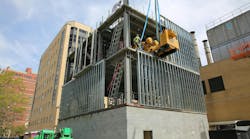In the typical repair scenario, a significant portion of the repair time is spent on activities other than the repair. Move those activities out of the repair window or eliminate them entirely, and you cut repair time significantly. Check out these three time-saving solutions:
- Part-chasing. Try to distribute commonly-used spare parts throughout the plant, rather than just in the central store-room. For each machine, keep a list of spare parts in the computerized maintenance management system (CMMS) and (where practical) at the machine or accessible via wireless device.
- Preliminary troubleshooting steps. The machine goes down and operators wait. While they are waiting, why can’t they go through a preliminary checklist? For example, the operator would check e-stops and power lights against a list PASS/FAIL style and note any FAILs.
- Training. When the person responding to the trouble call is unfamiliar with the machine, the repair turns into a training session. For critical equipment (at least), ensure a minimum of two repair techs on each shift are already trained on that equipment. Theory of operation, troubleshooting steps, and other important information should be learned while equipment is running, not while it’s down.




